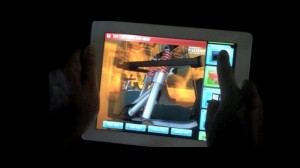It’s widely accepted that our country’s education system could use improvement. Given that fact, why is workplace training based on so many of the same (faulty) principles?

We all remember the drill from our school years: The teacher stands at the front of the room, lecturing on the subject at hand, and then assigns homework. You listen, maybe take notes… then you get home, look at the assignment, and realize there are key elements you simply don’t understand.
You grow up, enter the workforce, and it’s more of the same. In either case the end result is what? Instructional failure.
The important distinction is that with on-the-job learning failures the cost is much higher than a bad grade. Bad training can result in production slowdowns, high turnover, and worker injuries – all of which negatively impact revenue.
From Instructor-centered to Student-centered
Some instructors are trying a new approach by “flipping” the classroom. Instead of the traditional format, they’re taking advantage of digital technology and having students access course content material at home, then using classroom time to delve deeper under the guidance of the instructor.
It’s a technique that Sal Khan, founder of the now-famous Khan Academy, discovered somewhat accidentally; but it’s so brilliant he created an entire online school around it. And the Los Altos school district in California has incorporated it into their curriculum with much success.
There’s a lot the “flip” has to offer. The best advantages – paraphrased from Khan’s TED Talk – would make workplace training more efficient as well:
1. Ability to pause and repeat without feeling like you’re wasting the instructor’s time
2. Ability to review things previously learned, instead of being embarrassed to ask
3. Ability to learn in your own time, at your own pace
Because as Khan says, “The very first time, the very first time, that you’re trying to get your brain around a new concept, the very last thing you need is another human being saying, ‘Do you understand this?‘”
Putting the flip concept “to work”
There’s still merit to traditional, in-person/in-class training, of course – even in light of the availability of 3D Interactive training. But the effectiveness of those portions of training can be greatly improved by flipping the order of events. Much like aspirational learning methodologies for schools, having the monologue or “lecture” portion of a work training happen at home to inform thinking, makes the guided, hands-on portion that much more effective. Here’s why:
 1. Knowing what you don’t know – Students can familiarize themselves with information in advance. This means workers can come to training with questions in mind, instead of struggling alone with questions after-the-fact.
1. Knowing what you don’t know – Students can familiarize themselves with information in advance. This means workers can come to training with questions in mind, instead of struggling alone with questions after-the-fact.
2. Space to fail – As entrepreneur and “change” thought leader Seth Godin said at a recent TED event, “You cannot teach connecting dots in a textbook. You can only do it by putting people in a situation where they can fail.” Isn’t that always when the real learning takes place?
And one of the great strengths of Virtual Training is that it creates an environment where failure carries no risk. Being able to practice (and fail at) complicated tasks is especially important with high-risk jobs where getting things wrong can equal catastrophe.
3. Learning by doing – People learn best when they “do” rather than when they just listen. Using the flip approach, and truly doing their homework, workers can better absorb hands-on training.
It’s exciting to see how technology enhances the way we teach and learn. Hopefully someday we’ll see all educators embrace the flip approach, as well as other technologies like simulation training. Until then, Heartwood’s 3D Interactive Training offers organizations the chance to be part of the flip revolution – while producing better-trained workers as well.
Ready to embrace 3D Interactive Training and lead the way? Reach out and start a discussion today.


